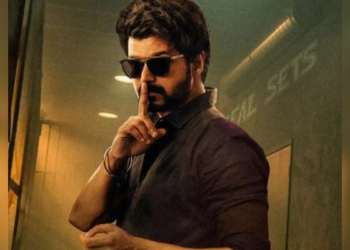

Note that GNB uses N3 very sparingly in the anupallavi of the kriti and refuses to be drawn into it during the swara prastAra, despite Chowdiah’s insistence on PD2 N3 S”. A brief sketch of the raga prefaces the kriti. Chowdiah accompanies him on the violin, Palani Subramania Pillai on the mridangam, and Umayalpuram Kothandarama Iyer on the ghaTam. Balasubramaniam, excerpted from an AIR Sangeet Sammelan concert. We present a breezy presentation of this song by G. Mysore Vasudevacharya‘s brochevarevarura is arguably the most popular kriti today. This swara is subservient to N2 and usually occurs in phrases such as S” N3 S”, S” N3 R2″ S”, and occasionally as P D2 N3 S”. The modern version of Khamas is punctuated by the bhAshAnga swara N3. Note that G2 appears as a subtle upward oscillation of R2″, rather than a flat note. Chowdiah accompanies him on the violin, Palani Subramania Pillai on the mridangam and Vilvadri Iyer on the ghaTam. This varNam is not very common in today’s stage and we present excerpts from a live concert of Musiri Subramania Iyer‘s at the Music Academy, Madras. This is substantiated in his own varNam, sami ninne. Instead, he says, “ … the swara G2 appears in the tAra stAyi prayogas such as S” R2″ (G2″)R2″ S”. According to him, Khamas is a bhAshAnga raga, but he does not mention N3 as the bhAshAnga swara. In this context, it is interesting to note what Subbarama Dikshitar says in his Sangita Sampradaya Pradarshini.

Today, it is considered that the bhAshAnga nature emerges with the addition of N3. However, in modern versions, the raga is considered bhAshAnga. The two pieces above characterize the upAnga raga Khamas. Note the beautiful phrase D3 N2 S” D3 N2 P D3 in the anupallavi. The raga mudrA is adroitly hidden in the kriti as a swarAkshara, and we leave it to the interested reader to uncover it. In contrast to sujana jeevana, this kriti starts at the tAra stAyi. We now turn to Dikshitar‘s treatment of Khamas, as seen in the kriti sarasa dala nayana. We also draw the attention of the listener to the phrase, S”–>P M1 G3 M1 that recurs throughout the kriti and sung delectably by DKP. Note how the identity of the raga is established by the very opening phrase. As a definition of Khamas, we present Thyagaraja’s sujana jeevana, sung by D. Through his two kritis, Thyagaraja gave a classical touch to this raga. Mahalingam (“Mali”) plays it as an opening piece in an AIR concert. Interestingly, but perhaps not surprisingly, T. Khamas is taught to every student through the swarajAti sambasivayanave. One of the earliest available pieces of composed music in Khamas is the Tamil Padam by Seerkazhi Muthu Thandavar (ca. Khamas is a very popular raga for padams and jAvalis.

The composer is Papanasam Sivan, and the music director, G.
#Varnam tamil movie movie#
Introducing the listener to Khamas, we first present a film song from the (Tamil) movie RAJA MUKTHI featuring M.K.Thyagaraja Bhagavathar. In the tAra stAyi, we commonly hear phrases such as: In contrast to the Hindustani Khamaj, the tAra shaDja is always approached by the prayoga D3 N2 S”. The panchama can also be used as a nyAsa swara. In these phrases, the nyAsa swara is the M1 at the end, and it is applied as (G3)M1. The form of the raga is established by phrases such as:ĭ3 N2 S” N2 D3 P M1 G3 M1, S” D3 P M1 G3 M1 etc. The raga is a uttarAnga pradhAna raga and its jeeva swaras are M1 and D3. Some call the raga sung in this scale as ‘Shuddha Khamas’, to distinguish it from the bhAshAnga version to be discussed shortly. The nominal Aarohana/avarohana is as follows: It is termed a ‘ desiya‘ raga and belongs to the 28th mela, Harikambodi. It is generally accepted that the raga is an adaptation of the Hindustani raga, Khamaj.


 0 kommentar(er)
0 kommentar(er)
